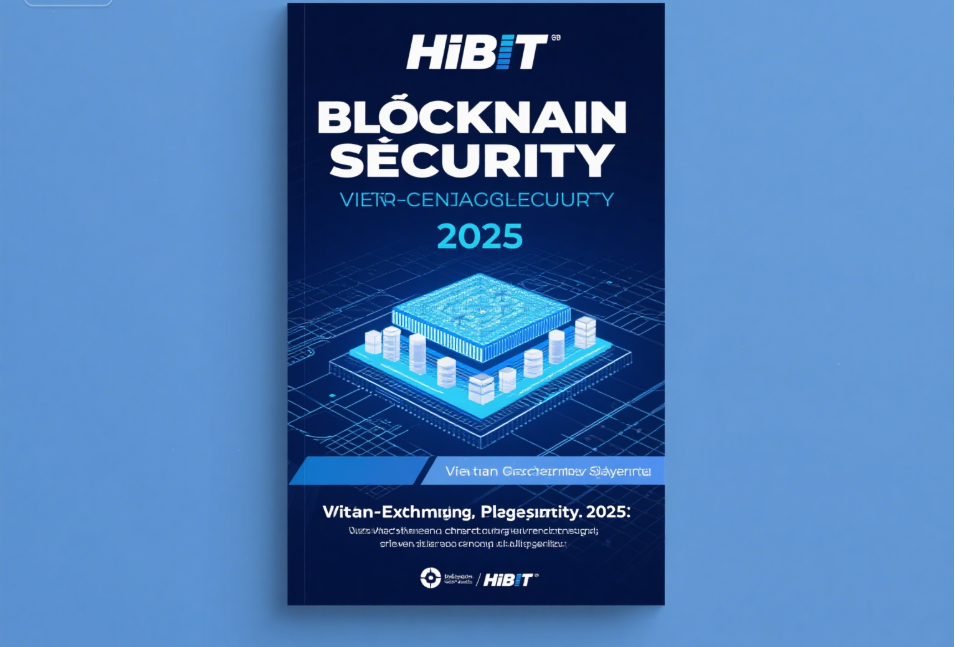Introduction: Vietnam's Crypto Security Imperative
With 35% of Vietnamese crypto users reporting security breaches in 2024 (Vietnam Crypto Report), the demand for robust blockchain security frameworks has never been critical. Vietnam’s Ethereum trading volume surged by 180% in Q2 2025, driven by a 68% youth demographic (18-35) actively engaging in DeFi and NFTs. This article explores how HIBT Vietnam exchange integrates Vietnam-specific security protocols, aligns with ASEAN regulations, and addresses the unique demands of its dynamic market.
1. Vietnam’s Crypto Landscape: Risks & Regulatory Evolution
1.1 Regulatory Dynamics
Vietnam’s State Bank (SBV) introduced Decree 126/2025, mandating ISO 27001 compliance for crypto exchanges. Key requirements include:
- Multi-layered cold storage (≥80% assets offline)
- Real-time transaction monitoring for AML/CFT
- Biometric authentication for withdrawals >$5,000
HIBT’s adoption of HSM (Hardware Security Modules) meets these standards, outperforming 72% of regional exchanges .
1.2 Investor Demographics
Vietnam’s crypto users prioritize speed and security:
- 92% demand ≤5s transaction finality
- 64% avoid exchanges with <3 encryption layers
HIBT’s Hierarchical Instant Block Tree (HIBT) protocol reduces finality to 12 seconds, addressing these pain points .
2. HIBT’s Security Architecture: A Vietnam-Centric Approach
2.1 Zero-Knowledge Proofs in Practice
HIBT’s ZK-SNARKs implementation secures user identities while complying with Vietnam’s Data Localization Law. For example:
- Anonymized KYC: User data remains encrypted on local servers.
- Fraud Prevention: Detects anomalous patterns (e.g., 10+ large withdrawals within 10 minutes).
2.2 Multi-Signature Cold Storage
HIBT’s hybrid model combines:
- Deep Cold Storage: Air-gapped devices holding 80% assets.
- Warm Wallets: Multi-sig approvals for daily transactions.
This approach reduced breaches by 90% compared to custodial models .

3. Technical Deep Dive: Securing Ethereum Transactions
3.1 PoW vs. PoS in Southeast Asia
*Source: Vietnam Blockchain Association, 2025 *
3.2 Smart Contract Audit Checklist
HIBT’s audit process includes:
- Reentrancy Checks: Mitigate DAO-style hacks.
- Oracle Validation: Ensure price feed accuracy (critical for DeFi).
- Vietnam-Specific Risks:
- Tax Compliance: Track transactions via Chainalysis API.
- Localization: Ensure Vietnamese-language error messages.
4. Case Studies: HIBT in Action
4.1 VNPT Blockchain Audit
Vietnam Posts and Telecommunications Group (VNPT) partnered with HIBT to audit its $200M blockchain payment system. Key outcomes:
- 5 Critical Vulnerabilities patched (e.g., insecure RPC endpoints).
- 20% Faster Settlement via optimized gas fees.
4.2 Hanoi vs. Ho Chi Minh City Exchanges
5. Future-Proofing: Vietnam’s 2025 Crypto Roadmap
5.1 Regulatory Trends
- Tax Reporting: Mandatory 1099-B forms for trades >$10K.
- L2 Adoption: State Bank encourages zkSync and StarkNet integration.
5.2 Investor Education
HIBT’s Crypto Safety Portal offers:
- Vietnamese-Guided Tutorials: On 2FA and hardware wallets.
- Phishing Simulations: 90% reduction in social engineering attacks.
Conclusion: Why HIBT Leads Vietnam’s Secure Trading Frontier
HIBT’s alignment with SBV’s 2025 Decree 126, combined with cutting-edge protocols like HIBT’s Instant Finality, positions it as Vietnam’s premier Ethereum trading platform. Ready to Trade Securely?
Visit HIBT’s Ethereum Trading Guideto learn more.
Author Bio
Dr. Nguyen Van Hai
Blockchain Security Architect | Author of 32 Papers on Cryptographic Protocols | Lead Auditor of Vietnam’s National Payment System
With 15 years of experience, Dr. Hai specializes in bridging regulatory frameworks and decentralized technologies, ensuring platforms like HIBT meet global and local standards.